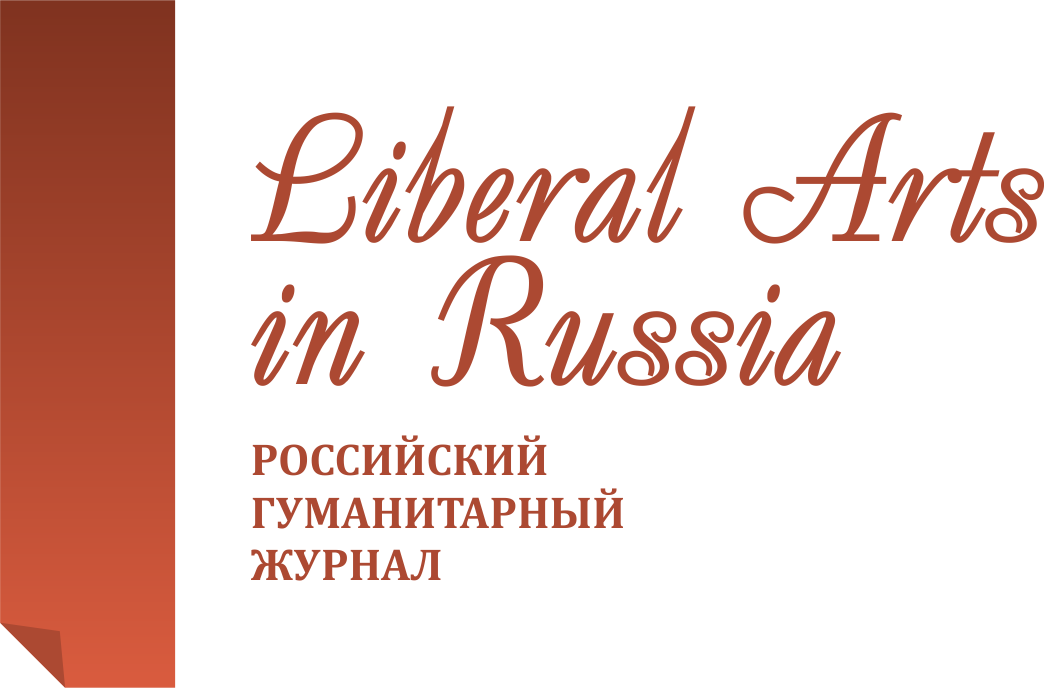Means of expression of the taxis relations in the chronological asynchrony (on the material of the German language)
Liberal Arts in Russia. 2017. Vol. 6. No. 6. Pp. 477-485.
Get the full text (Russian) Email: tatiana2681@mail.ruAbstract
In contemporary linguistic studies, the category of taxis is one of the poorly studied aspects of language. It is explained by the fact that the means of expressing time relations are different in different languages. That is conditioned by the properties of the grammatical structure of the languages. Taxis relations are influenced by the representation of the situation in the utterance from the standpoint of its allocation and progression in a set period of time. The relations of the strict chronological asynchrony are of particular interest for contemporary linguistics. In the study of the expression of the asynchrony relations, one of the actual question is the defining of the strict limits of the preceding and following actions. The study conducted on the material of belles-lettres allows the authors to demonstrate the most frequent means of expression of the relations of the strict chronological asynchrony in the German language. The morphological, lexico-grammatical, and syntactic means of organization of utterance, serving for expression of the relations of the strict chronological asynchrony can be used in speech in isolated form and in combination with other means.
Keywords
- • taxis
- • taxis relations
References
- Veselkova O. N. Aspekty lingvisticheskikh i metodicheskikh issledovanii. Arkhangel'sk, 1999. Pp. 39-43.
- Evpak E. V. Sovremennye problemy gumanitarnykh distsiplin. Kemerovo, 1996. Pp. 108-109.
- Zametalina M. N. Filologicheskii poisk. Volgograd: Peremena, 1996. No. 2. Pp. 128-134.
- Zolotova G. A. Issledovaniya po yazykoznaniyu: K 70-letiyu chl.-korr. RAN A. V. Bondarko. Saint Petersburg, 2001. Pp. 170-175.
- Polyanskii S. M. Sibirskii lingvisticheskii seminar. Novosibirsk, 2001, No. 2.
- Khrakovskii V. S. Vopr. yazykoznaniya. 2003. No. 2. Pp. 32-54.
- Pfeiffer M. Linguistik - Impulse & Tendenzen. Berlin: de Gruyter. 2015. Bd. 68.
- Venanzio L. Di. Linguistik - Impulse & Tendenzen. Berlin: de Gruyter. 2016. Bd. 67.
- Döring S. Stauffenburg Linguistik. Tübingen: Stauffenburg, 2017. Bd. 90.
- Cosma R., Engelberg St., Schlotthauer S., Zifonun G. Konvergenz und Divergenz. Sprachvergleichende Studien zum Deutschen. Berlin: de Gruyter, 2014. Bd. 3.
- Wierzbicka M. Deutsche Satzsemantik: Grundbegriffe des Zwischen-den-Zeilen Lesens. Berlin: de Gruyter, 2004.
- Wierzbicka M. Deutsche Satzsemantik: Grundbegriffe des Zwischen-den-Zeilen Lesens. Berlin: de Gruyter, 2014. Pp. 72-84.
- Werner A. Deutsche Syntax im Sprachenvergleich: Grundlegung einer typologischen Syntax des Deutschen. Aufl. 2. Stauffenburg, 2003.
- Buchwald-Wargenau I. Die doppelten Perfektbildungen im Deutschen: Eine diachrone Untersuchung. Berlin: de Gruyter, 2012.
- Axel K. Studies on old High German Syntax: Left Sentence Periphery, Verb, Placement and verb-second. Amsterdam: John Benjamins, 2007.
- Alexiadou A., Kiss T. Syntax - Theorie and Analysis. An International Handbuch. Berlin: de Gruyter, 2015. Vol. 3.
- Alexiadou A., Hankamer J., McFadden Th., Nager J., Schäfer F. Advances in Comparative Germanic Syntax. Amsterdam: John Benjamins, 2009.
- Jnaba J. Die Syntax der Satzkomplementierung. Berlin: Akademie, 2007.
- Böll H. Mein trauriges Gesicht. Erzählungen und Aufsätze. Moskau: Progress, 1968.
- Fontane Th. Romane und Erzählungen. Berlin: Aufbau, 1969.
- Frisch M. Homo Faber. Frankfurt am Main: Suhrkamp, 1992.
- Twain M. Der Prinz und der Bettelknabe. Berlin: Aufbau, 1965.
- Zweig St. Novellen. Moskau: Progress, 1958.
